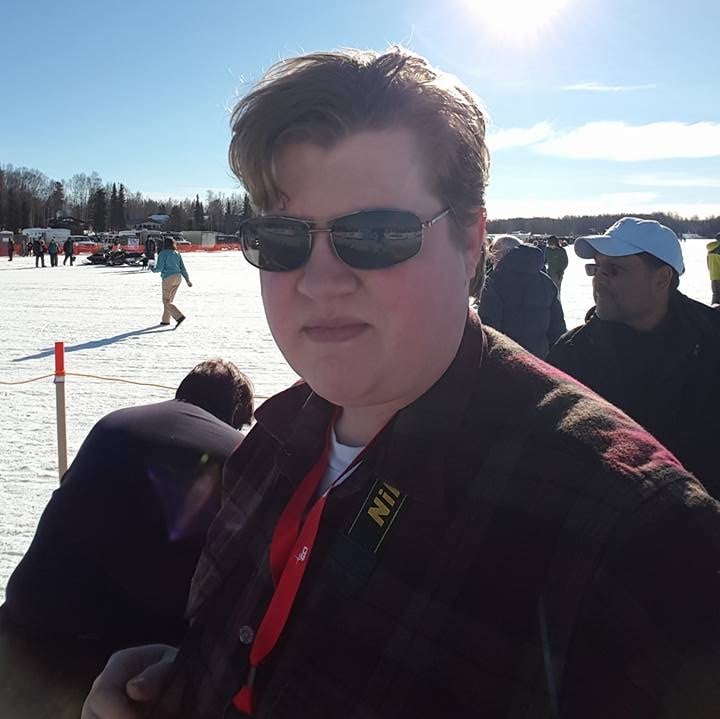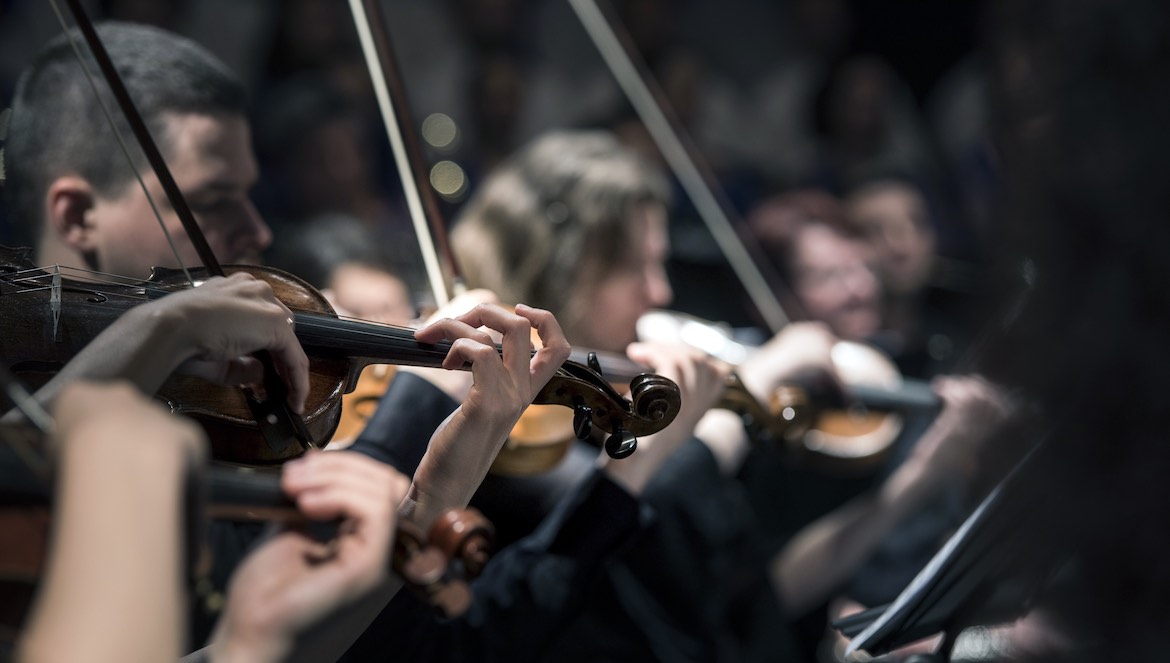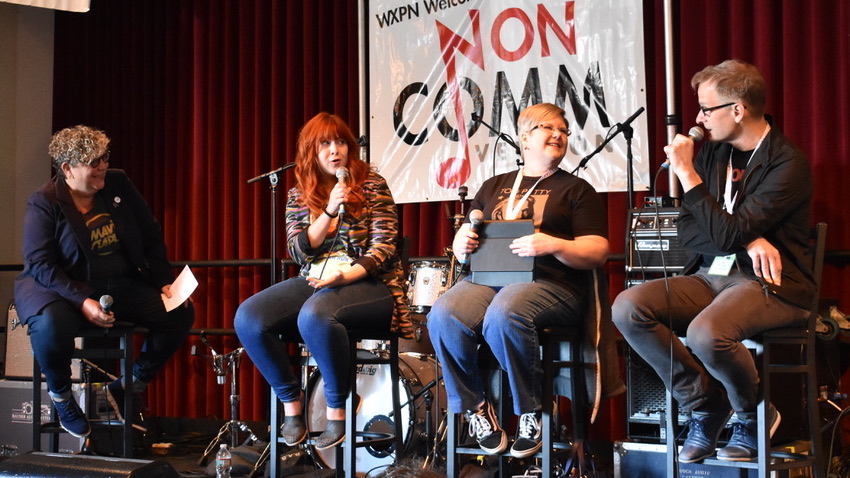Kids love listening to stories. So why aren’t public media podcasts telling them any?

Brains On! host Molly Bloom in the Minnesota Public Radio News studio in St. Paul and co-host 10-year-old Sierra Haro in the KPCC studio in Pasadena, Calif. Each episode of Brains On! features a different kid co-host. (Photo courtesy of Brains On!)
On a long afternoon in the middle of this past summer, I sat in an uncomfortable silence at a dining table with nine children ages 10 and under. I’d recruited them, via their parents, into an informal focus group for my new science podcast for kids.
We were listening to an episode about how scientists discovered decoy spiders — a species that sculpts fake spiders in their webs. The kids appeared to be doing their best not to fidget. I spent 14 minutes hoping they weren’t bored.
I was conducting a series of focus groups to learn how kids listen to audio stories. Is a story without pictures engaging? Could they follow and learn from it? Would they willingly listen to a podcast? There’s a dearth of information about kids’ listening habits — probably because not a lot of audio is made for them. I had to find out for myself.
The ending theme music played out, and then the questions started coming. Why would a spider build a fake version of itself? Was it trying to hide? Or was it trying to scare someone off? I had no answers — scientists are asking these questions, too — but I felt relief and excitement.
We talked through their likes and dislikes. Mostly, they wanted to know more about the spider. When I asked whether they would listen to the podcast again, all nine kids nodded yes. With the popsicles I’d brought as incentives now sticks on the table, they slipped outside to play.
Only a few minutes later, one of the girls popped her head in and asked me to come look at something. I found the group huddled around a dead wasp, cradled in half of a plastic Easter egg. They were involved in an intense discussion of what had killed it. I asked if they usually led scientific backyard investigations. Never, they said. For me, this was the ultimate data point: They had listened, and they really got it.
This makes my ultimate question even more puzzling: Why is there so little educational audio content for kids? If you look at iTunes’ Kids & Family category, you’ll find that most podcasts are targeted toward parents. I can’t help but think this neglect of younger audiences is a habit picked up from public radio.
Public radio’s almost-exclusive focus on adult audiences is strange, considering public television’s success with kids. PBS Kids is a leader in educational programming, expanding to fill the growing digital environment with videos, games and apps. In fact, PBS has a handful of video podcasts based on its kids’ shows.
With parents so concerned about kids overdosing on screen time, you’d think public radio would pick up the baton. Its history includes only a handful of shows made for kids, and it has seemed loath to venture out of its comfort zone.
But you need only to look to the recent success of Brains On!, a science podcast for kids, to see that there is an active and engaged audience hungry for kid-friendly public radio content. It’s worth noting that the show was developed by a group of producers, not a station.
Brains On! is the side project of producers Molly Bloom, Sanden Totten and Marc Sanchez. They came up with the idea while chatting between adjoining cubicles at Minnesota Public Radio, said Bloom, who hosts the show. The co-workers felt that kids were underserved by public radio. But they didn’t think they were taking a risk in reaching out to a new audience.
“We knew that there were lots of public radio listeners with kids who would appreciate something to play for their kids with the public radio sensibility that they loved already,” Bloom told me.
They weren’t wrong. Their show is now three years old and enjoys a loyal following that keeps them supplied with an endless stream of science questions. It hovers in the top 10 of the iTunes Kids & Family charts. Excerpts of the show air on Minnesota Public Radio, and Southern California Public Radio, where Totten is now based.
But a science show for kids is still like the red-headed stepchild of the public radio world. Although Brains On! is listed as a MPR podcast, it’s not financially supported by the station. Bloom, Totten and Sanchez make it mostly on their free time. Bloom says the reaction from higher-ups has been mixed.
“Our newsrooms have been very supportive and encourage us to make new episodes. They like the audience it’s building,” she said. “But I think [American Public Media] as a whole is still trying to figure out its on-demand audio strategy. So I think they’re trying to figure the strategy out and how we fit into it.”
I asked Bloom my big question: Why aren’t there more shows like Brains On!? She hypothesizes that public radio sees developing content for a new audience, on precious public radio real estate, as risky.
But the fact is that kids have always been a hidden audience. They’re sitting in the backseat, growing up on their parents’ radio choices. They’re not immune to audio storytelling — in fact, they love it.
“There are a lot of kids who love Radiolab. Kids are read stories that don’t have pictures and they can follow it, easily,” said Bloom. “So kids can definitely consume audio-only content and enjoy it. It engages their imagination in the way that watching a television program probably doesn’t.”
Whatever public radio’s hold-ups have been, podcasting could solve them. “I think podcasts are huge, because for kids, that is how they listen to things,” Bloom told me. Think about how many times a kid can watch the same movie, or read the same book, never getting bored. The on-demand nature of podcasting matches those habits, allowing kids to listen to episodes over and over again, learning something new each time. It fits into routines that already exist — the drives to school, and stories before bedtime.
Maybe, with podcasts, it’s time for kids to finally be recognized as part of a listening audience. And maybe it’s time to start making things for them to listen to.
Lindsay Patterson produces and co-hosts Tumble, a science podcast for kids, and writes The Tumble, a weekly podcast recommendation newsletter for families. She has also appeared on Current’s podcast to discuss podcasting. She’s based in Austin, Texas.
Related stories from Current:










Just reading great stories to kids on the radio – or podcast – is super as well. Years ago on WVMR-AM we had a ten miute story time each evening at 5:15, when Moms were preparing dinner and kids could have sometbhing to keep them out of her hair. They were just cold reads of classic stories- Toby Tyler and Ten Wekks With the Cricus, Little House, etc. The favorite one I did was “The Best Chrsitmas Pageant Ever,” done over the ten weekdays before Christmas. And you know what? Lots of grwonups loved listening to the stories too!
Does anyone remember Kids America? I grew up listening to that program, and it probably has a lot to do with my love of public radio (and my career in public media).
https://www.youtube.com/watch?v=JwrCnfOUVrY